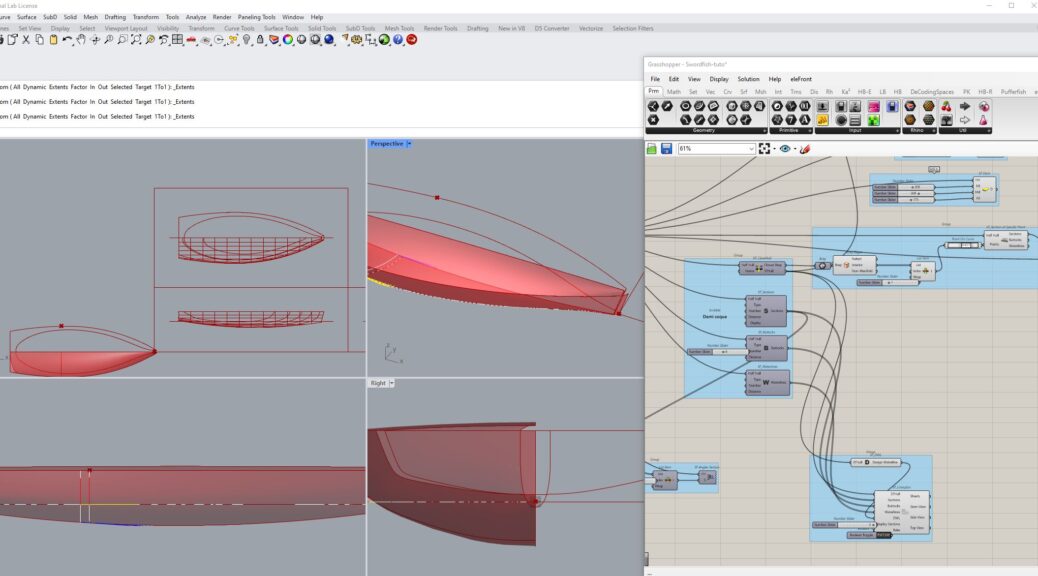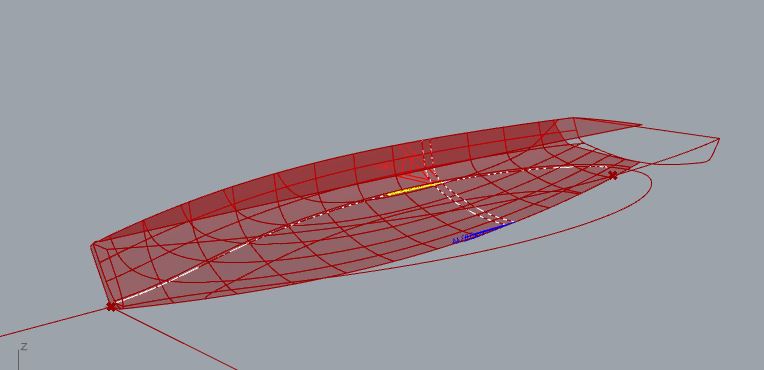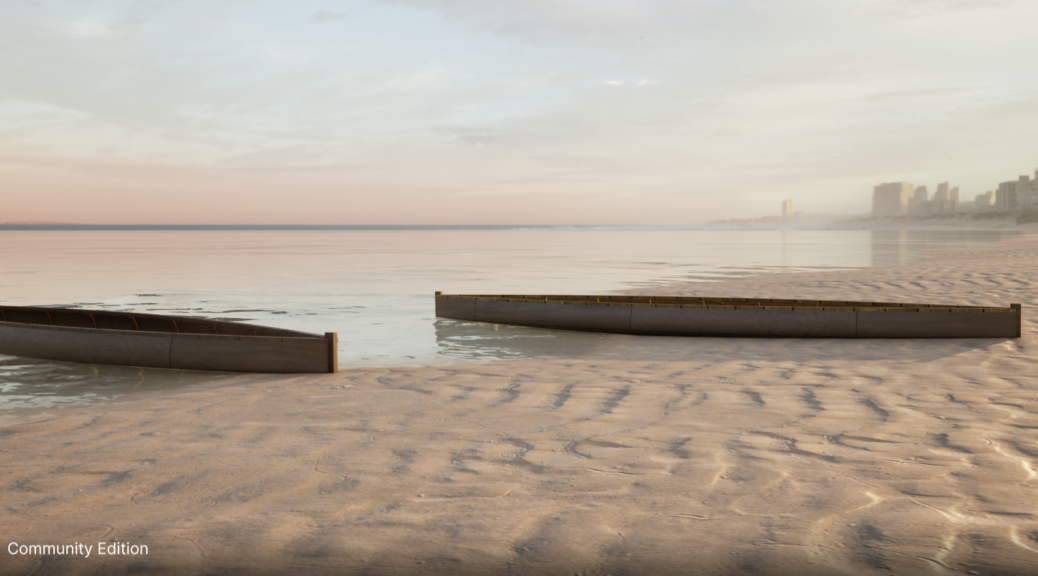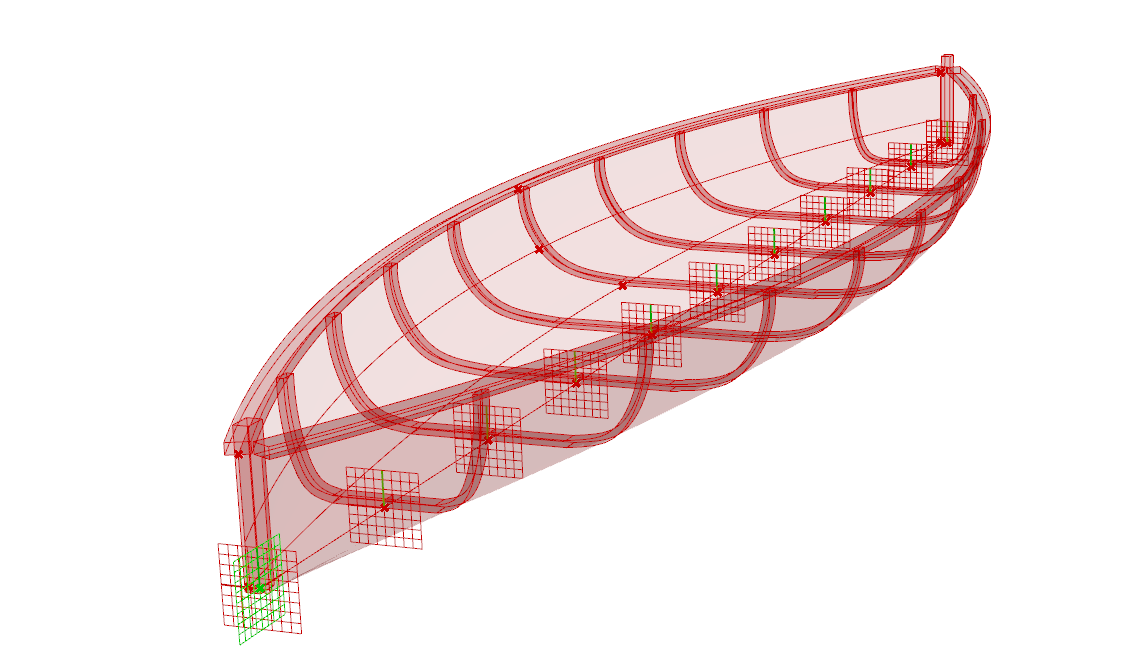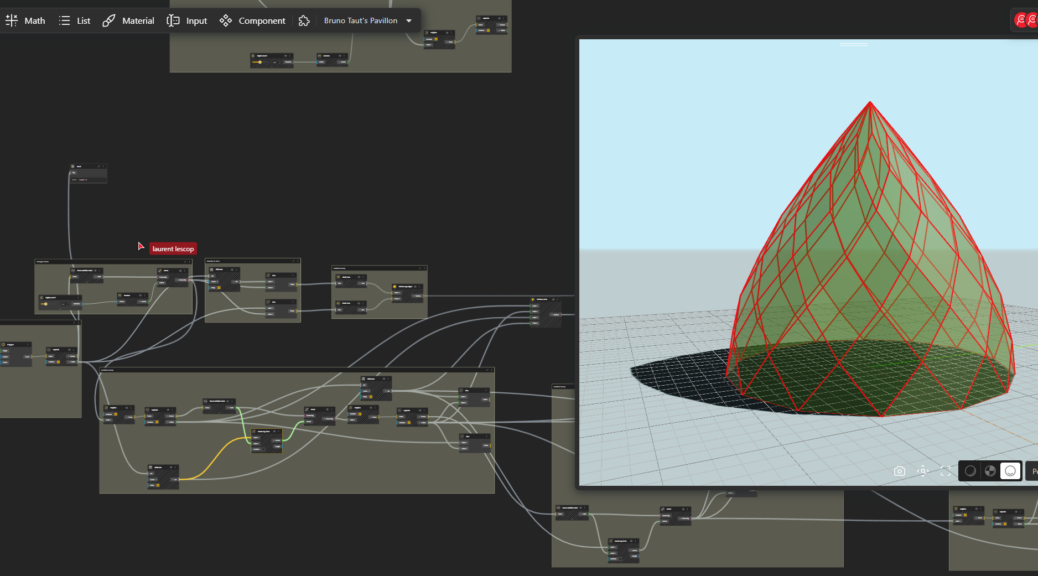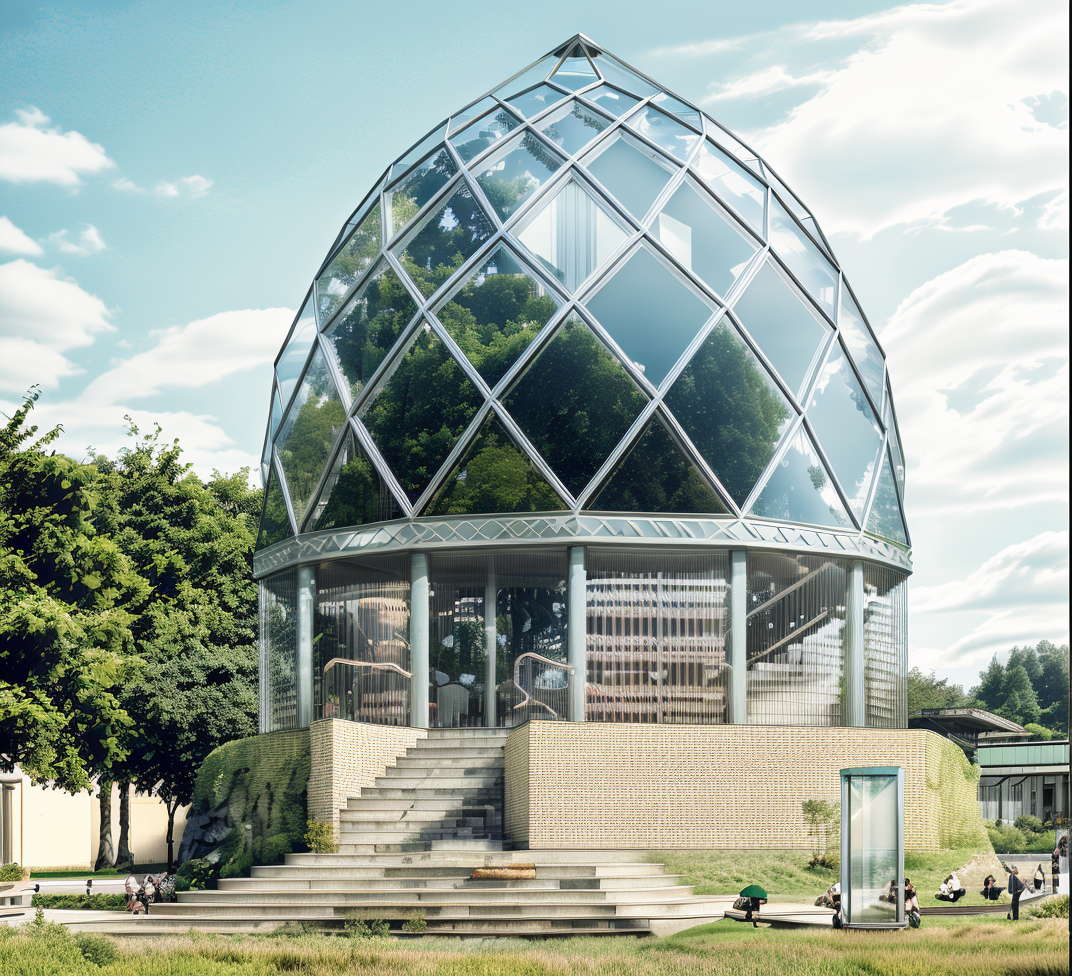Introduction
Grasshopper
Grasshopper est un plugin de modélisation paramétrique pour Rhinoceros 3D. Il permet de générer des formes complexes à l’aide d’une approche visuelle basée sur des nœuds et des connexions, plutôt que par des scripts de programmation. Très utilisé en architecture, en design et en ingénierie, il offre une grande flexibilité pour la conception et l’optimisation des formes.
Swordfish
Swordfish est un outil de calcul et d’analyse spécialisé pour l’architecture navale. Il permet d’évaluer la stabilité, la résistance structurelle et la performance hydrodynamique des navires. Son intégration avec Grasshopper permet une approche paramétrique de la conception navale, facilitant l’exploration de multiples itérations et optimisations. A télécharger ici. Continuer la lecture de Grasshopper – Swordfish tutorial – 01
